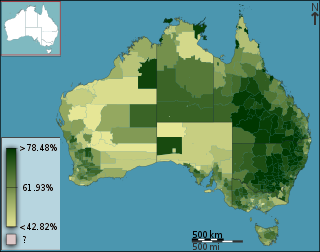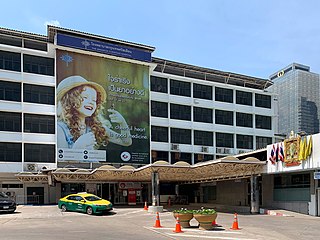Related Research Articles

Harbin is a sub-provincial city and the provincial capital and the largest city of Heilongjiang province, People's Republic of China, as well as the second largest city by urban population after Shenyang and largest city by metropolitan population in Northeast China. Harbin has direct jurisdiction over nine metropolitan districts, two county-level cities and seven counties, and is the eighth most populous Chinese city according to the 2020 census. The built-up area of Harbin had 5,841,929 inhabitants, while the total metropolitan population was up to 10,009,854, making it one of the 50 largest urban areas in the world.

Heilongjiang, formerly romanized as Heilungkiang, is a province in northeast China. It is the northernmost and easternmost province of the country. The province is bordered by Jilin to the south and Inner Mongolia to the west. It also shares a border with Russia to the north and east. The capital and the largest city of the province is Harbin. Among Chinese provincial-level administrative divisions, Heilongjiang is the sixth-largest by total area, the 15th-most populous, and the second-poorest by GDP per capita.

Qiqihar is the second-largest city in the Heilongjiang province of China, in the west central part of the province. The built-up area made up of Longsha, Tiefeng and Jianhua districts had 959,787 inhabitants, while the total population of the prefecture-level city was shrinking to 4,067,489 as of the 2020 census. These are mainly Han Chinese, though the city is also home to thirty-four minorities including Manchus, Daur, and Mongols.

The Chinese Orthodox Church is an autonomous Eastern Orthodox church in China. It was granted autonomy by its mother church, the Russian Orthodox Church, in 1957.

Christianity in China has been present since at least the 7th century and has gained a significant amount of influence during the last 200 years. The Syro-Persian Church of the East appeared in the 7th century, during the Tang dynasty. Catholicism was among the religions patronized by the emperors of the Mongol-led Yuan dynasty, but did not take root until it was reintroduced in the 16th century by Jesuit missionaries. Starting in the early nineteenth century, Protestant missionaries attracted small but influential followings, and independent Chinese churches followed.

Mudanjiang, alternately romanized as Mutankiang, is a prefecture-level city in the southeast part of Heilongjiang province, People's Republic of China. It was called Botankou under Japanese occupation. It serves as a regional transport hub with a railway junction and an international airport connecting with several major Chinese cities as well as Incheon International Airport serving Seoul. Mudanjiang is located 248 km (154 mi) from Vladivostok, Russia. In 2011, Mudanjiang had a GDP of RMB 93.48 billion with a 15.1% growth rate. In 2015, Mudanjiang had a GDP of RMB 118.63 billion.

Christians in Singapore constitute 18.9% of the country's population. In 2020, about 37.1% of the country's Christians identified as Catholic and 62.9% as 'Other Christians'.

As of the year 2020, Christianity had approximately 2.6 billion+ adherents out of a worldwide population of about 7.8 billion people. It represents nearly one-third of the world's population and is the largest religion in the world, with the three largest groups of Christians being the Catholic Church, Protestantism, and the Eastern Orthodox Church. The largest Christian denomination is the Catholic Church, with 1.3 billion baptized members. The second largest Christian branch is either Protestantism, or the Eastern Orthodox Church.

Christianity in Japan is among the nation's minority religions in terms of individuals who state an explicit affiliation or faith. Between less than 1 percent and 1.5% of the population claims Christian belief or affiliation. However, Christianity has played a crucial role in the shaping of Japanese identity and the relationship between religion and the state for more than four centuries. Most large Christian denominations, including Roman Catholicism, Protestantism, and Orthodox Christianity, are represented in Japan today.

The presence of Christianity in Australia began with the foundation of a British colony at New South Wales in 1788. Christianity remains the largest religion in Australia, though declining religiosity and diversifying immigration intakes of recent decades have seen the percentage of the population identifying as Christian in the national census decline from 96.1% at the time of the Federation of Australia in the 1901 census, to 43.9% in the 2021 census.

Christianity in Africa arrived in Egypt in the middle of the 1st century. By the end of the 2nd century it had reached the region around Carthage. In the 4th century, the Aksumite empire in modern-day Ethiopia and Eritrea became one of the first regions in the world to adopt Christianity as an official religion. The Nubian kingdoms of Nobatia, Makuria and Alodia followed two centuries later. Important Africans who influenced the early development of Christianity include Tertullian, Perpetua, Felicity, Clement of Alexandria, Origen of Alexandria, Cyprian, Athanasius and Augustine of Hippo.
Religion in Ukraine is diverse, with a majority of the population adhering to Christianity. A 2018 survey conducted by the Razumkov Centre found that 71.7% of the population declared themselves believers. About 67.3% of the population declared adherence to one or another strand of Orthodox Christianity, 7.7% Christian with no declared denominational affiliation, 9.4% Ukrainian Byzantine Rite Catholics, 2.2% Protestants and 0.8% Latin Rite Catholics, 1-2% Islam, Judaism was 0.4%; while a small percentage follow Hinduism, Buddhism and Paganism (Rodnovery). A further 11.0% declared themselves non-religious or unaffiliated. According to the surveys conducted by Razumkov in the 2000s and early 2010s, such proportions have remained relatively constant throughout the last decade, while the proportion of believers overall has decreased from 76% in 2014 to 70% in 2016 and 72% in 2018.

Christianity was first introduced to Thailand by European missionaries. It represents 1.17% of the national population, which is predominantly Buddhist. Christians are numerically and organizationally concentrated more heavily in the north, where they make up an estimated 16% of some lowland districts and up to very high percents in tribal districts.

Christianity in Russia is the most widely professed religion in the country. The largest tradition is the Russian Orthodox Church. According to official sources, there are 170 eparchies of the Russian Orthodox Church, 145 of which are grouped in metropolitanates. There are from 500,000 to one million Old Believers, who represents an older form of Russian Orthodox Christianity, and who separated from the Orthodox Church in the 17th century as a protest against Patriarch Nikon's church reforms.

Christianity in Turkey has a long history dating back to the early origins of Christianity in Asia Minor during the 1st century AD. In modern times the percentage of Christians in Turkey has declined from 20 to 25 percent in 1914 to 3–5.5 percent in 1927, to 0.3–0.4% today roughly translating to 200,000–320,000 devotees. Exact numbers are difficult to estimate as many former Muslim converts to Christianity often hide their Christian faith for fear of familial pressure, religious discrimination, and persecution.

The Cathedral of the Holy Wisdom of God or Saint Sophia Cathedral in Harbin is a former Russian Orthodox church located in the central district of Daoli, Harbin City, Heilongjiang, China.

The Cathedral of the Sacred Heart of Jesus is a Roman Catholic church in Harbin, Heilongjiang Province, China. Its official name is Sacred Heart of Jesus Diocesan Cathedral of Harbin.
Christians are a minority in Inner Mongolia region of the People's Republic of China. There are Eastern Orthodox Churches in Labdarin, Manzhou and Hailar. The Shouters are active in Inner Mongolia. About 100,000 Chinese Christians were in the region in 1993. The region has few Mongolian Christians. Numerous house church leaders were detained in Xilinhot in 2008. Inner Mongolia is an area of rapid growth of Protestantism. Religious Affairs Bureau staff have declared a Christmas gathering in Duolun County illegal in 2006. Inner Mongolia Bible School was founded in 1987. Inner Mongolia has more than 170,000 Protestants and over 1,000 official churches. Tongsun Street Church was started with the help of Swedish missionaries around 1900. According to Tjalling Halbertsma, Christians used to live in Inner Mongolia before 1206. Hohhot used to have or has a very large house church with more than 1500 church members. Protestantism entered the region in the late 19th century. Due to the Dungan Revolt (1895–96) the western Inner Mongolian Han Chinese Catholic village Xiaoqiaopan had defensive procedures institted by the Belgian Priests in charge. Missionaries were killed during the Boxer Rebellion in 1900. The French Catholic vicar apostolic, Msgr. Alfons Bermyn wanted foreign troops garrisoned in inner Mongolia, but the Governor refused. Bermyn petitioned the Manchu Enming to send troops to Hetao where Prince Duan's Mongol troops and General Dong Fuxiang's Muslim troops allegedly threatened Catholics. It turned out that Bermyn had created the incident as a hoax. In Fengzhen, a church was founded as early as 1892. Most Christians in Inner Mongolia are Han Chinese.
References
- ↑ "5 Jahre lang nicht geschlafen, um die Bibel auswendig zu lernen". Jesus.ch. Retrieved 15 August 2018.
- ↑ "Heilongjiang Province - Operation World". Operationworld.org. Retrieved 15 August 2018.
- ↑ "Archived copy" (PDF). Archived from the original (PDF) on 2013-10-12. Retrieved 2015-03-07.
{{cite web}}: CS1 maint: archived copy as title (link) - ↑ "Heilongjiang House Church Persecuted in Coordinated Effort by Chinese Federal Agencies - Christian Newswire". Christiannewswire.com. Retrieved 15 August 2018.
- ↑ "Seminaries and Bible Schools". Archived from the original on 2011-07-21. Retrieved 2011-01-19.
- 1 2 3 "Religion in China" (PDF). China-zentrum.de. Archived from the original (PDF) on 3 March 2012. Retrieved 15 August 2018.